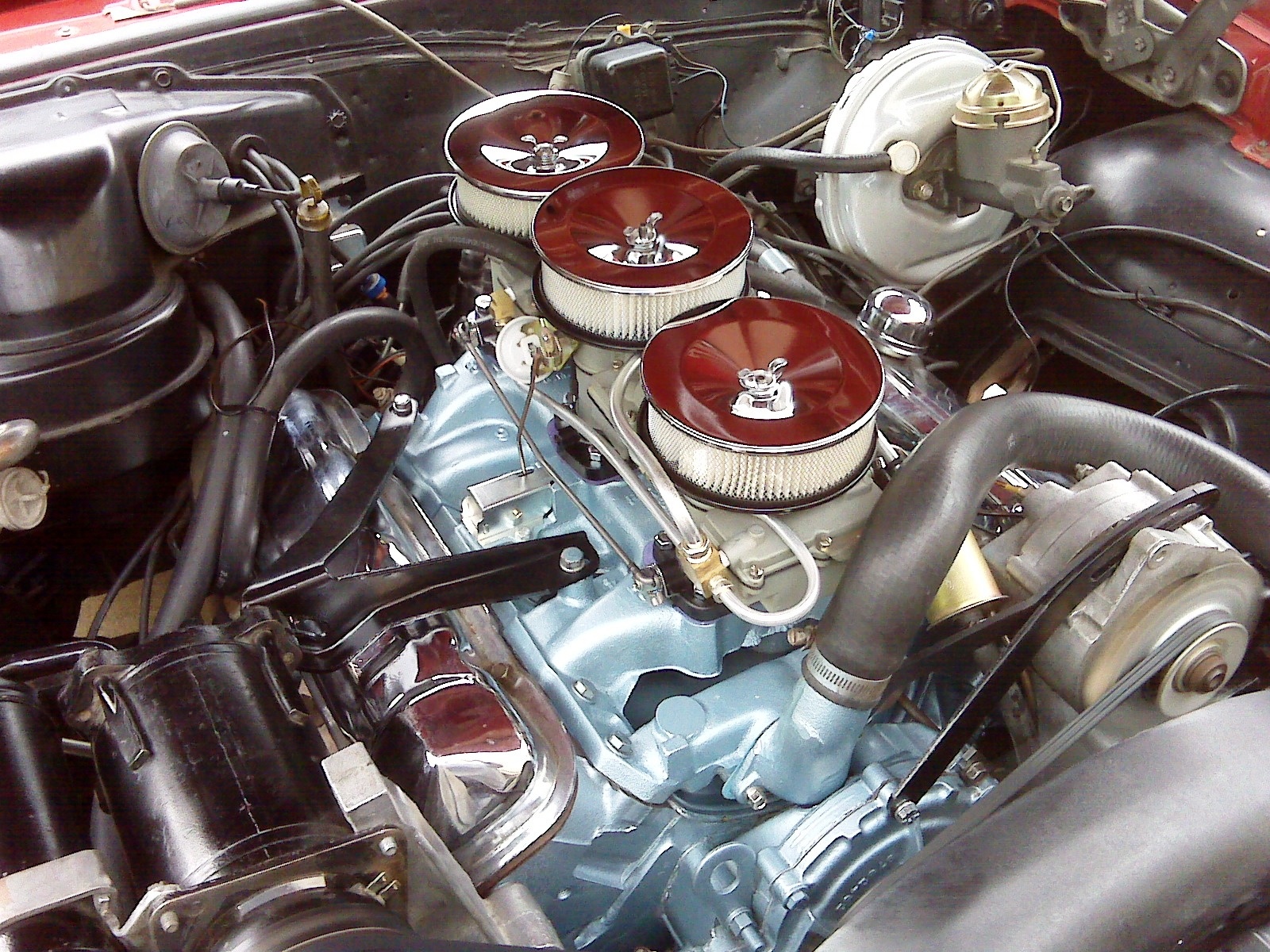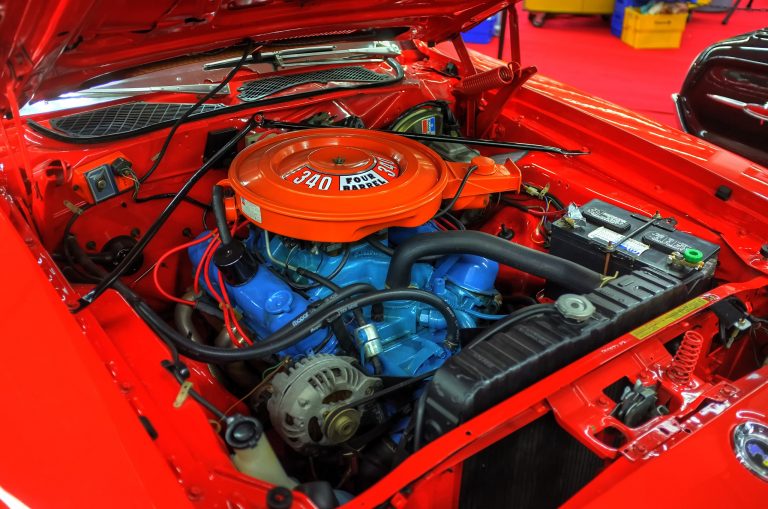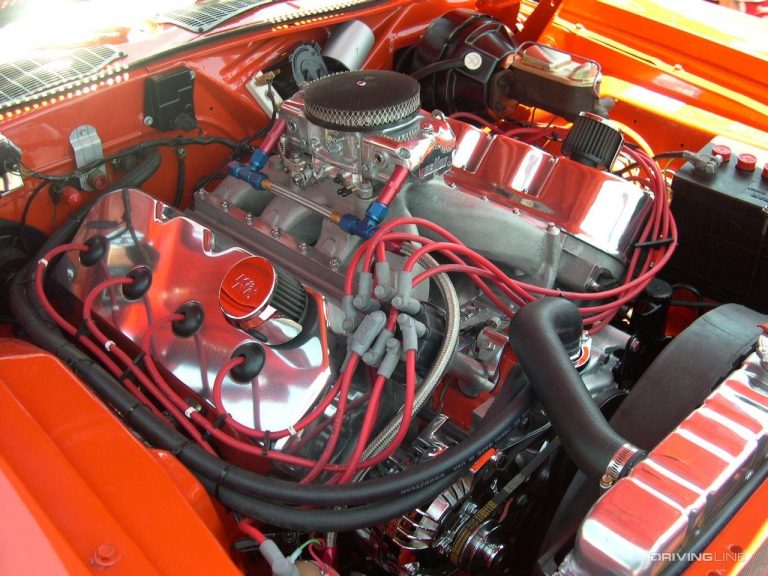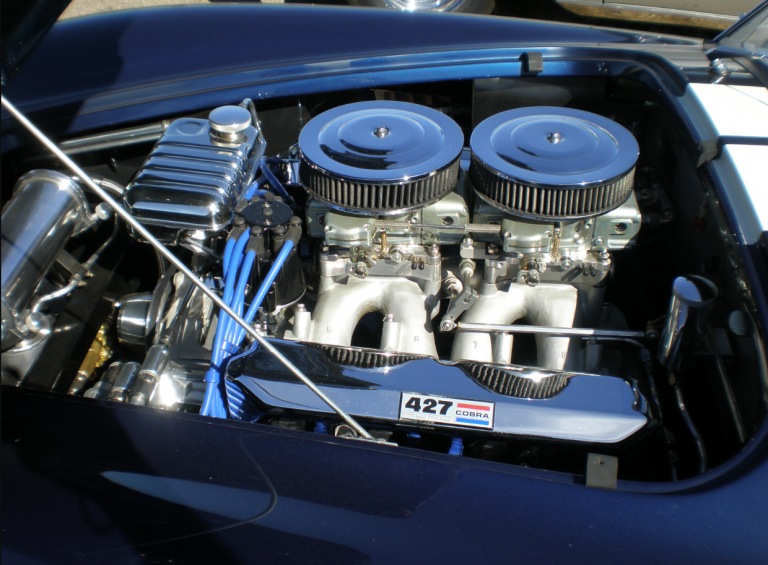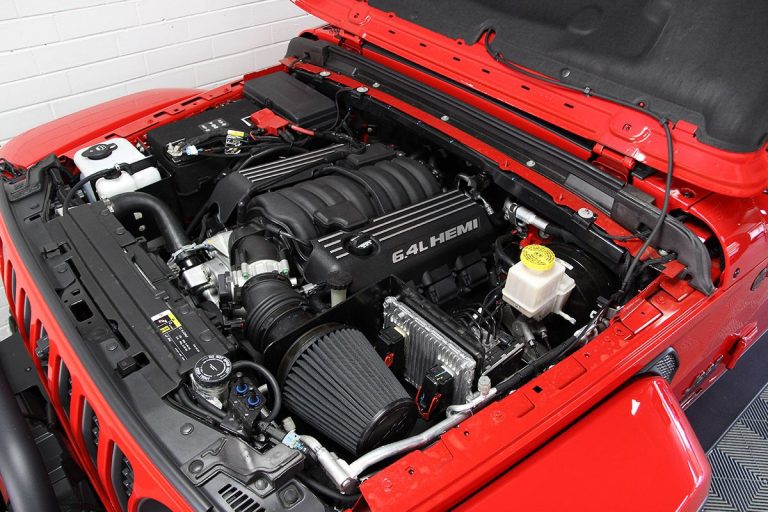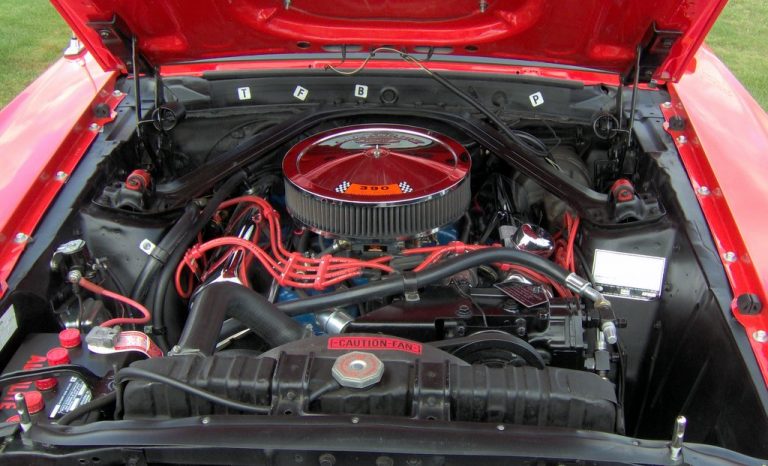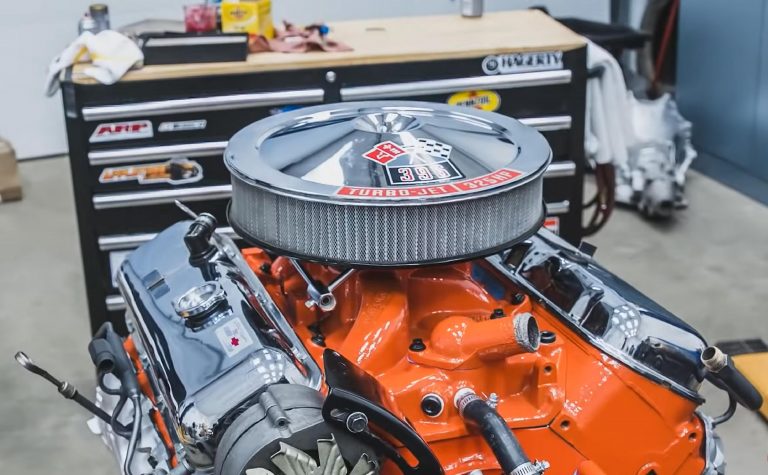Pontiac 389 Engine Guide

Meet Austin
Austin has been a muscle car enthusiast since an early age with his Dad having a collection including a 1965 Mustang, 1968 Mercury Cougar, and a 1969 Mustang Mach 1 among many others. Austin received a technical writing degree from University of Colorado Denver with the intentions of becoming an automotive journalist. His automotive knowledge, enthusiasm, and hands on experience allow him to craft detailed, accurate, and high-quality articles for the passionate Muscle Car Club audience.
The late 1950s were a time of serious reformation and change for Pontiac. Their image was growing stale by that point and a change in management in 1956 sparked an initiative to get the Pontiac appeal back on track, especially with a younger audience base. The strategic move to promote leading performance V8 specialist Pete Estes to Chief Engineer should tell you a bit about the direction in which Pontiac was aiming.
Pontiac has a long history with V8s. In fact, they have one of the longest V8 legacies of any automobile manufacturer overall. It all started with the 268-ci straight-8 that Pontiac introduced in the 1930s. Over the following decades, the Pontiac flathead 8 would prove to be a popular engine, especially in the hotrod community. Pontiac switched to a more modern overhead V8 in 1955, which would continue to be updated well into the late 1990s.
1959 was a crucial year for the Pontiac V8, as the 389-cid Pontiac V8 was introduced. Based on the Pontiac 370 released a year prior, the Pontiac 389 quickly became one of Pontiac’s most famous powerhouses. With its placement in the famous GTO, an argument could be made that the 389 was the catalyst for the muscle car wars through the 1960s. In this article, we look at the Pontiac 389 in a bit more depth, covering its history, performance, and common upgrades.
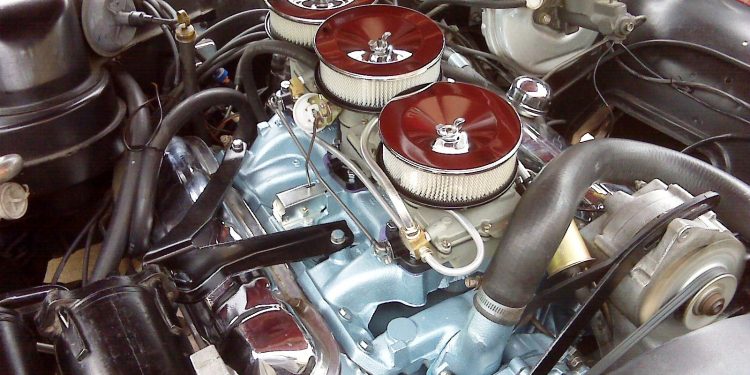
What Cars Use the 389 Pontiac V8?
The Pontiac 389 had a lengthy eight-year production run between 1959 and 1966. Of course, the Pontiac 389-cid V8 is most famous for its application in the Pontiac GTO. However, it was also used in a number of other Pontiac vehicles during the time. The Pontiac 389-cid engine was used in the following years and models:
1959-1966 Pontiac Catalina
1959- 1961 Pontiac Ventura
1959-1966 Pontiac Star Chief
1959-1966 Pontiac Bonneville
1962-1966 Pontiac Grand Prix
1964-1966 Pontiac Tempest/GTO
Over 8 years and 6 models, the Pontiac 389 proved to be an extremely versatile engine. It powered everything from Pontiac’s midsize Tempest platform, of which the GTO is an offshoot, to the full-size Bonneville. Its inclusion in so many different models goes to show the 389’s ability to work in a number of environments. The Pontiac 389-cid is just as comfortable on residential streets as it is on the racetrack. That do-it-all quality is what made the 389-cid V8 the standard Pontiac V8 option for nearly a decade.
Pontiac 389 Engine Specs
Engine: Pontiac 389 Small Journal Engine
Displacement: 389 cid (6.4L)
Block/Heads: Cast Iron
Configuration: 90° V8
Bore x Stroke: 4.06″ x 3.75″
Compression Ratio: 8.6:1, 10:1, 10.25:1, 10.5:1, 10.75:1
Firing Order: 1-8-4-3-6-5-7-2
Engine Weight: ~640 lbs
Horsepower Range: 215 @ 3,600 rpm – 368 hp @ 5,200 rpm
Torque Range: 380 lb-ft @ 2,000 rpm – 429 lb-ft @ 2,800 rpm
At a macro level, the Pontiac 389 V8 is simply a bored version of the Pontiac 370cid V8 that came before it in 1958. Even that engine is a larger version of the 287cid Pontiac V8 that arrived in 1955. As a result, they all feature a similar all-cast-iron construction making them extremely strong but also extremely heavy. Even stronger are the 389 Super Duty and 420-A Tempest engines that feature four bolt main blocks, forged steel connecting rods and crankshafts, and solid lifter camshafts.
Due to the fact that the Pontiac 389 V8 was offered in so many different configurations in so many different vehicles, power and performance varied significantly across the 389 line. The largest difference between the models is their carburetor configuration. Generally speaking, the 389s with a 2-barrel carb arrangement are the least powerful. The opposite can be said about Pontiac 389s equipped with the high-performance Tri-power carb setup, which produces the most power.
Compression ratio also tended to increase in correlation with the carburetor arrangement. The majority of 2-barrel 389s shared a relatively low compression ratio of 8.6:1. While later high-compression Pontiac 389 V8s received 10.25:1 compression later on, 4-barrel and tri-power 389s typically had much higher 10.5:1 or 10.75:1 compression.
Pontiac 389 V8 Engine History and Evolution
As with most engines that are in production for a substantial amount of time, the Pontiac 389 received a fair number of updates and changes over the years. While the overall 389-cid V8 stayed the same at its most fundamental level, changes to the engine’s induction system, cooling system, camshaft, and material led to a wide array of different 389 specs between 1959 and 1966. In fact, by the end of the Pontiac 389’s production cycle, there were 13 different 389 engine specifications offered in total.
1959 Pontiac 389 Specs
1959 was the start of the 389 era. In its initial form, the 389 shared many similarities with the previous 370-cid Pontiac V8 that was only produced for the 1958 model year. Overall, the engine construction of the Pontiac 389 was the same as the other modern Pontiac V8s that had established the formula in 1955. Like the V8s before it, the 389 featured cast iron heads, block and wedge-shaped combustion chambers, and a unique ball pivot rocker arm mounting solution.
The 1959 389 V8 features a “reverse flow” cooling system that is unique to the first model year. Pontiac had used a reverse system since 1955, as early 1950s engines had cylinder head cooling issues that would result in warped valves. Pontiac’s reverse cooling system would cool the cylinder head first, then trickle through the block, prioritizing top-end cooling.
The 389-cid V8 was released in numerous trims for the 1959 model year. The 1959 Pontiac 389 was available with three carburetor configurations including multiple 2-barrel configurations, two 4-barrel configurations, and a high-performance Tri-power 3-2 carburetor configuration. Power ranged from 215-315 horsepower for non-420A 389 engine models.
1959 was also the first year that the high-performance “420-A” Pontiac 389 engine option was available. The 420A 389 was the top dog of the 389 line at the time and was meant primarily for racing applications. It featured a four-bolt main block, upgraded cam, increased compression, and a Tri-power carb producing 348 horsepower overall. The 420A Pontiac 389 would lay the groundwork for the race-spec Super Duty 389-cid to follow.
1960 389-cid V8 Engine Specs
The Pontiac 389 would go on to receive a few notable changes for the 1960 model year. Perhaps most significant is the removal of the “reverse flow” cooling system used in the 1959 389cid. The reverse flow cooling system was no longer needed due to a GM-wide move to harder and stronger valves. Outside of the cooling system change, not much else changed for the 1960 389. The only other notable change to the existing range was an upgraded cam for the base 4-barrel engine, bumping horsepower to 281.
1960 Pontiac 389 Super Duty
One of the most significant additions to the Pontiac 389 lineup was the addition of the 389 Super Duty in 1960. Pontiac beefed up the 389 Super Duty for use in NASCAR applications. As such, it featured many performance-oriented upgrades like a four-bolt main block, forged steel connecting rods and crankshaft, 10.5:1 compression ratio, enlarged 1.92” intake and 1.66” exhaust valves, and either a 4-barrel or Tri-power carburetor arrangement.
The 389 Super Duty was available for purchase as an over-the-counter addition to your 389-powered Pontiac. They are, however, a rare find as not many Pontiac customers knew about or opted for the pricey add-on. The 389 Super Duty would have a great deal of success in the 1960 NASCAR season, winning 7 of 44 races that year. The Pontiac 389 is rated at 368 horsepower in Super Duty trim.
1961-1962 Pontiac 389 Engine Specs
Owing to the success of the 1960 NASCAR season, the marketing department at Pontiac thought that the 389-cid had earned a more fitting name. As a result, the Pontiac 389 was deemed the “Trophy-8” from 1961 onwards. There’s no question that the Pontiac V8 lived up to its title. Pontiac offered a 3.2L 4-cylinder for the 1961 model year that was essentially just one bank of the 389-cid. It received the “Trophy-4” moniker as a nod to its bigger brother.
The 1961 and 1962 Pontiac V8 lineup stayed nearly identical overall. Pontiac did, however, swap out the existing 2-barrel engine options with new low-compression and high-compression models. The low-compression 389 2-barrel retained a 8.6:1 compression ratio from the years prior. The high-compression 2-barrel received a 10.25:1 ratio, in line with the high-compression 4-barrel option. The low-compression and high-compression 389 2-barrel have a horsepower rating of 230 and 267 respectively.
As a small aside, some of the 1961-1962 Pontiac 389 Super Duty engines received even larger valves, bumping the intake valve diameter to 2.02” and the exhaust valve diameter to 1.76”
1963 Pontiac V8 Engine Specs
By 1963, the more powerful Pontiac 421 was beginning to outshine the 389 for performance applications. The Pontiac 421 HO was the king of the streets in 1963, producing 353 and 370 horsepower depending on carburetor configuration. Even more powerful were the 421 Super Duty V8s that could produce up to 410 horsepower. As the 421 became the more capable engine, Pontiac discontinued the high-power 420A Tempest 389 variant. That left the 313 horsepower 3 2-barrel Tri-power 389 as the most powerful 389 engine in 1963.
1964 Pontiac V8 Engine Specs
1964 was a very important year for Pontiac, thanks primarily to one model: the GTO. In 1964, the Pontiac GTO was still a trim level for the Pontiac LeMans. The package included a high-performance version of the 389, which was revived for the GTO, among other performance-enhancing modifications. Many people credit the GTO as the car that started the 1960s muscle car showdown between multiple manufacturers and many iconic models. At the end of the day, credit should go to the 389 for starting the GTO legacy.
The 389 was fitted to the GTO to adhere to GM’s strict power-to-weight ratio requirements, as the 421 was too heavy for the GTO chassis. In terms of its construction, the 1964 389 is very similar to the 1960 Super Duty 389. It featured a four-bolt main block and larger intake and exhaust valves making it a dependable tire shredder. The 1964 GTO was offered with either a 4-barrel carb or a 3-2 carb setup. The 1964 GTO 389 put out 325 horsepower in 4-barrel form and 348 with a Tri-power configuration.
1995-1996 389 Engine Specs
1995 and 1996 rounded out the 389cid Pontiac V8 run as the 389 was replaced by the 400cid Pontiac V8 in 1967. There were a couple of updates to the 389 in the final years of its production. Most changes were centered on GTO applications. In the final years, the Pontiac GTO received either a 4-barrel or 3-2 Tri-power option as usual. Their respective outputs were 335 and 360 horsepower. The Tri-power carburetor was only available on the GTO 389, making the 4-barrel the most powerful option for the standard 389 lineup.
Common 389cid V8 Engine Upgrades
At this point, there is an established method of extracting more power from a 389 V8. In fact, there are three primary areas where the 389 V8 can be improved that can result in healthy power gains.
Pontiac V8 Overbore/Long Stroke
The first, funny enough, is the aspect that makes the Pontiac 389 a 389. Displacement. In most cases, Poncho enthusiasts looking for more power out of their 389 will increase the bore and stroke of their V8. As we know from the Pontiac 400cid V8 that replaced the 389 V8, an increase in displacement can make a big difference in power figures. Increasing the 389’s 3.75” stroke is often the first order of business in that respect. An increased stroke will provide a healthy increase in torque, which can be especially helpful for low-compression 389 V8 models.
The degree to which you bore and stroke a Pontiac 389 V8 is up to personal preference and horsepower goals. A 0.040”- 0.060” overbore on a Pontiac V8 can provide a substantial amount more displacement than the original 389cid. Regardless, if you intend on increasing the bore and stroke on your Pontiac V8, you’ll need other supporting modifications. Primary among which is a set of custom pistons, accompanying connecting rods, and potentially a new crankshaft.
Pontiac V8 Upgraded Cylinder Head
Cylinder head technology has come a long way since 1959. Modern cylinder heads are far superior to the antiquated cast-iron lumps of the late 50s. That is especially true in terms of weight and airflow. Most modern 389 cylinder heads are constructed from aluminum and CNC ported by the manufacturer. In comparison to the factory cast-iron cylinder heads that Pontiac used on the 389, modern aluminum 389 heads can reduce engine weight by 50 lbs or more. That is a weight difference that you’ll be able to feel in the handling.
While weight savings are unquestionably important, higher flow figures from a modern 389 head are more important from a power perspective. Most modern 389cid V8 head options optimize airflow via a machined combustion chamber surface, larger valves, or compatibility with a modern hydraulic camshaft. With the Edelbrock Performer 389 Head Kit, you get all of the above-mentioned characteristics. Additionally, while generating more power overall, the Edelbrock 389 cylinder head kit decreases compression to 9.5:1. This allows for your 389 to run low-octane fuel, which is risky with common 389 compression of 10.25:1 and above.
As a final note on upgraded Pontiac 389 V8 cylinder heads, swapping to a modern head will often require new and upgraded head bolts and a new head gasket.
Upgraded 389cid V8 Camshaft
One of the most common modifications in the muscle car community as a whole is a cam swap. From the factory, lower-tier Pontiac 389 V8s ran much milder cams than the high-compression performance 389s found in the GTO. As such, if you don’t have a high-compression Tri-power 389cid from a GTO, a solid mild cam upgrade would be the 068 cam from the higher tier engine. The 068 cam is good for those looking for a mild increase in power without a ridiculous amount of lope. Your 389 will have good road manners and will pick up a couple of extra ponies with stock internals.
Of course, with a more aggressive cam, it is always a good idea to replace the tired valve springs with new ones. That is especially the case for the 389 V8, as it is such an old engine. It might also be a good idea to upgrade to hardened valve seats as well. Over time the factory seats can recess which can affect performance.
Common Pontiac 389 V8 Engine Problems
When looking at the Pontiac 389cid V8 overall, there is little that commonly goes wrong with them. Their cast-iron construction, simple mechanical design, and bulletproof block make it an engine that can still run strong, even today. High-performance 389 versions are even stronger thanks to their four-bolt main cast-iron block and forged internals. With that being said, there is no engine that is without its faults, and the 389 is certainly not absent of them.
Pontiac V8 Nylon Timing Gear Issue
One of the most significant issues with the Pontiac 389 V8 is the material of the factory cam timing gear. In stock form, the cam timing gear teeth were coated in a hard nylon material that would break with age. Around the 30k-40k mark, the nylon gear has been known to deteriorate, especially at high RPMs. The damage to the teeth can present multiple issues. It can cause your 389 V8 to jump timing, requiring a new timing set and time spent retiming the engine. Luckily, the Pontiac 389 is a non-interference engine, meaning that it won’t do damage to the valves.
The particles from the damaged nylon gear can also enter the 389’s engine oil. That could lead to a blocked fuel pump later down the line. That can starve the Pontiac V8 of oil, ultimately resulting in a seized engine and destroyed rod bearings. This issue is not present on 1964+ engines, as Pontiac switched to a steel timing gear. For those with a pre-1964 389 V8, a common solution is swapping in a timing gear from a Tempest 4-cylinder model.
389 V8 Tempremental Rocker Studs
The Pontiac 389 uses hollow press-in rocker studs to secure the rockers to the head. This is done for oiling purposes, as early Pontiac 389s oiled the rockers through an oil hole in the block and head to a cast galley under the studs. Over time, these hollow rocker studs have been known to back themselves out of the head. This can ultimately result in a broken or loose rocker arm which will impact the effected cylinder’s performance.
The most common method of remedying this issue is bringing your 389’s head to a machine shop and having it threaded to accept screw-in rocker arm studs. This immediately remedies the issue of the studs backing themselves out of the head.
Pontiac 389 V8 Engine Summary
Over its 8-year production run, the Pontiac 389 V8 made quite a name for itself. It became an engine known for kicking off the American muscle craze in the early 1960s and for humiliating the competition during the 1960 NASCAR season. The famous “Trophy-8” 389cid V8 is a versatile engine that powered numerous models in the Pontiac catalog. From four-door full-size family cars to certified race cars, the 389 Pontiac V8 was a trusted powerhouse for almost a decade.

